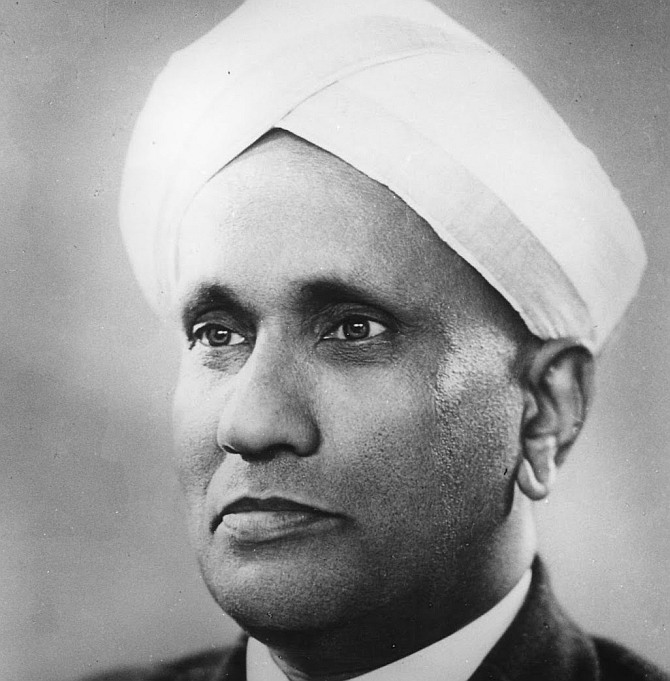Born on 7 November 1888 in Trichinopoly, India, Chandrasekhara Venkata (C. V.) Raman was a Nobel Prize–winning physicist who advanced the development of science in India through the creation of scientific institutions, academies, and journals. Raman studied at Presidency College in Madras, earning his BA in 1904 and MA in 1907. Because of the limited opportunities in scientific research in India in the early 20th century, Raman sought a job with the government, becoming an accountant in the finance department.
During his decade of civil service, Raman continued his physics research and published some 30 papers in such journals as Nature, Philosophical Magazine, and Physical Review. In 1917 he was offered the first-ever Palit Professorship of Physics at Calcutta University, a post he held for the next 16 years. It was there that he started work on light scattering and discovered the effect that now bears his name. Raman and his student K. R. Ramanathan found that some of the light that scattered off molecules in various samples emerged with different frequencies. The frequency shifts offer information about the rotational and vibrational states of molecules in the sample. For that work, Raman was awarded the 1930 Nobel Prize in Physics.
In 1933 Raman became the first Indian director of the Indian Institute of Science in Bangalore, where he remained until his retirement in 1948. Raman also made significant contributions in the fields of optics, spectroscopy, and crystal physics. To promote the publication of scientific research, Raman established the Indian Journal of Physics in 1926 and was the first editor. In 1935 he founded the Indian Academy of Sciences, and in 1948 he founded the Raman Research Institute in Bangalore, where he served as director and remained active until his death in 1970 at age 82. In addition to the Nobel, Raman received many honors and awards, including the 1941 Franklin Medal and the 1957 Lenin Peace Prize.
In 1929 he was made knight of the British Empire, and in 1954 he was one of the first recipients of the Bharat Ratna, the highest civilian award given by the Indian government.
Source: PT
Image Courtesy:Rediff
You may also like
-
India Can’t Afford to Remain Stagnant at this Juncture, Says PM Modi; Asks People to Buy Locally-Made Goods
-
Stolen Artefacts to be Returned to India from Scotland Museums
-
Legendary Singer Lata Mangeshkar Passes Away At the Age of 92
-
Netaji’s Hologram Statue at India Gate
-
10th Century Stone Idol of Goat Head Yogini IllegallyRemoved from A Temple in Lokhari, Banda, UP Being Returned to India
